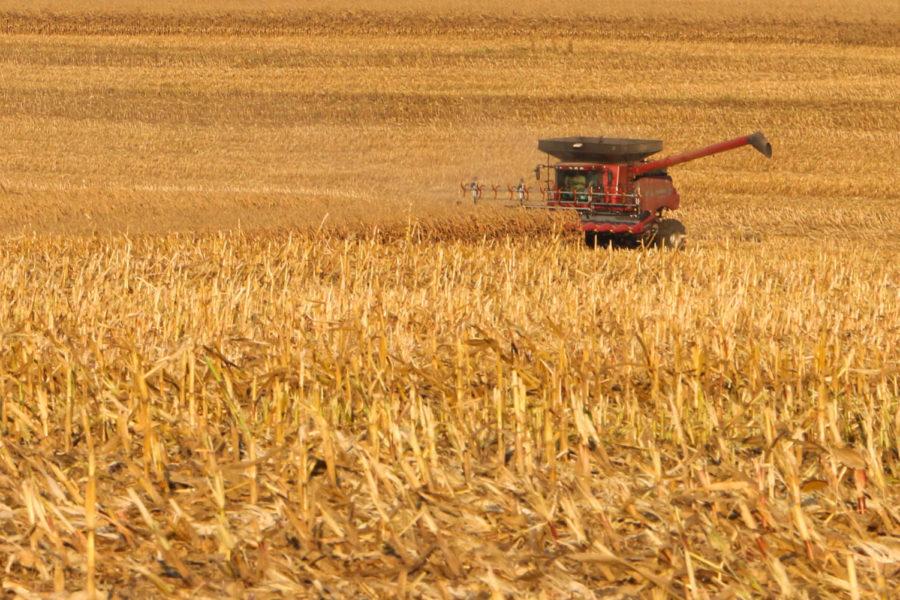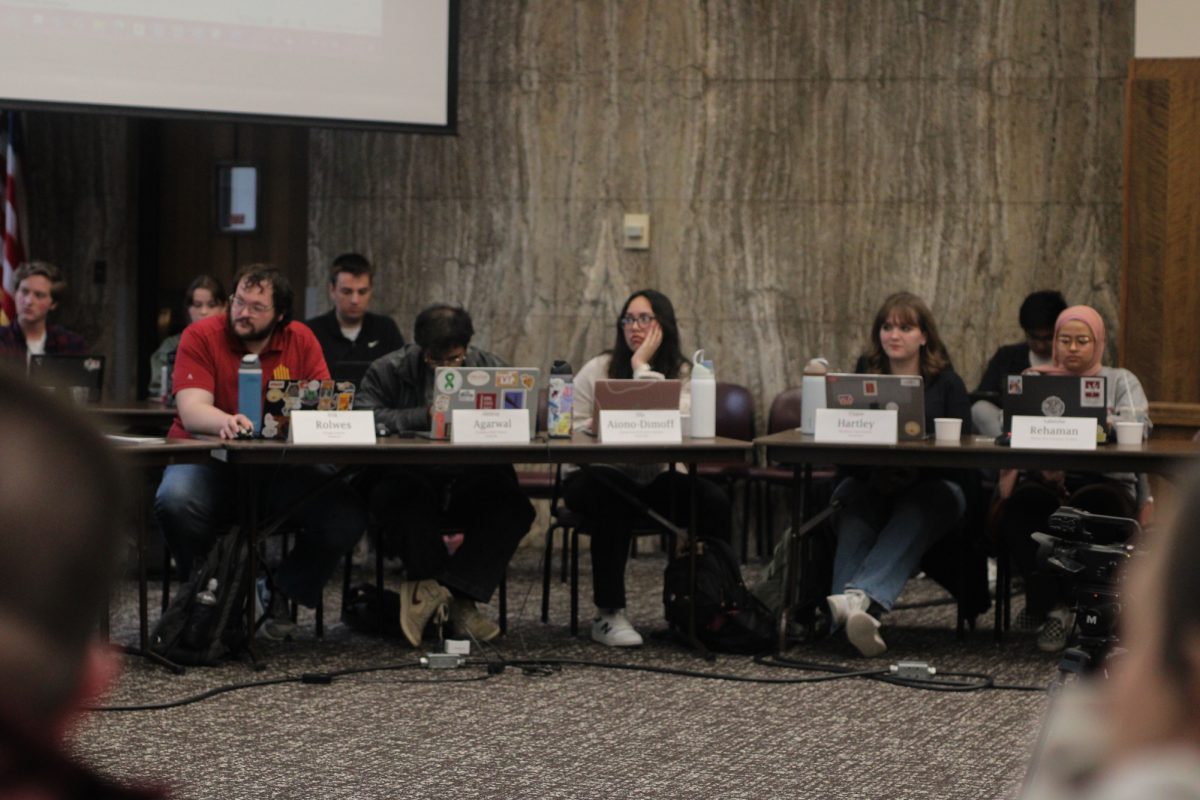New data from Corn Research Project
Emily Blobaum/Iowa State Daily
A combine harvests corn on Saturday, Oct. 21. The Heinemans own 900 acres of land, which takes several weeks to complete harvesting.
January 18, 2018
The Sustainable Corn Coordinated Agricultural Project, also known as the Sustainable Corn CAP, has published its data from a five year research project.
This team was funded through a $20 million grant from the United States Department of Agriculture, National Institute of Food and Agriculture from 2011-2017.
The 140 member research team included members from 11 different institutions. Additionally, the project spanned nine states with 30 research sites.
The main goal of the research was to see what farmers could do at the farm level to increase adaptation to rises in precipitation and temperature changes, which are the two primary factors that farmers in the Midwest are looking at, said Lori Abendroth, project manager.
To tackle these impacts of climate change, all of the members brought their own backgrounds and experiences to focus on a multidisciplinary approach to aid them in tackling this large topic.
However, with such a large group, there was the challenge of collaborating over such a large area.
To keep communication up, everyone met in person at least once a year as well as conducted monthly virtual meetings in smaller groups.
“We really were a highly integrated team,” Abendroth said. “We spent a lot of time getting to know one another’s disciplines, know one another’s research areas and how we could not only support one another’s individual science but then how could we connect those disciplinary and individual sciences in more of a large scale.”
Daryl Herzmann, systems analyst in agronomy, and Giorgi Chighladze, systems analyst in agricultural and biosystems engineering, are two of the multiple co-authors that also are from Iowa State.
A big part of the grant was the element of student involvement. Six graduate students and 55 undergraduate students from Iowa State were involved in this project and mainly helped gather research.
“Part of the initiative also wanted us to place a lot of importance on training the next generation of scientists,” Abendroth said.
At the end of such a lengthy project, there is a lot to reflect on.
“Seeing the team members work together and to really have their data be transparent and available to others is really profound in terms of the amount of data,” Abendroth said.
The data can be accessed through the USDA National Ag Library Data Commons website.







